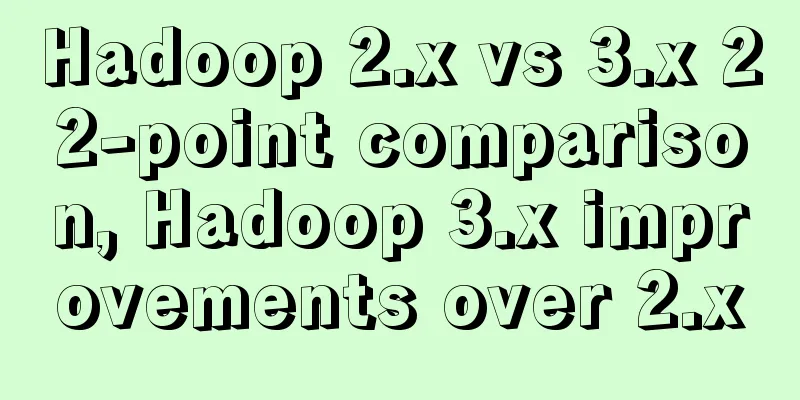A brief discussion on several situations where adding indexes to MySQL does not take effect

Adding indexes can improve query efficiency. Adding an index means adding an index file, which stores the address of the data, similar to the directory of our document. During the search process, you do not need to search from the contents of the book, but can directly search according to the page number corresponding to the directory. Indexes are searched based on addresses. Use explain to view the SQL execution planExecution plan type Indicates the way MySQL finds the required row in the table, also known as the "access type". Common types are as follows: ALL, index, range, ref, eq_ref, const, system, NULL 1. Use or to query multiple columns, type=all
2. Use fuzzy query, type=all
3. Operations on indexed fields
4. If the column type is a string, it needs to be quoted. The name field is a string typeWithout quotes type=all
There are quotation marks tye=ref
First of all, MySQL has a type conversion rule that converts "characters to numbers". The above SQL contains operations: 5. Reverse query distinction (not, not in, not like, <>, !=, !>, !<) Use index effects
Other situations 1. The associated fields in the joint index do not use the same character set; This concludes this article on several situations in which adding an index to MySQL does not work. For more information about adding an index to MySQL not working, please search for previous articles on 123WORDPRESS.COM or continue browsing the following related articles. I hope you will support 123WORDPRESS.COM in the future! You may also be interested in:
|
<<: Detailed explanation of Vue life cycle functions
>>: Better looking CSS custom styles (title h1 h2 h3)
Recommend
Detailed explanation of various ways to merge javascript objects
Table of contents Various ways to merge objects (...
Three ways to share component logic in React
Without further ado, these three methods are: ren...
Tutorial on installing the latest MySQL 8.0.18 using a compressed package on Win10 64-bit (with pictures and text)
WIN10 64-bit install the latest MySQL8.0.18 downl...
Linux system MySQL8.0.19 quick installation and configuration tutorial diagram
Table of contents 1. Environment Introduction 2. ...
MySQL 8.0.18 installation and configuration method graphic tutorial under MacOS
This article records the installation of MySQL 8....
MYSQL subquery and nested query optimization example analysis
Check the top 100 highest scores in game history ...
Detailed explanation of Nginx status monitoring and log analysis
1. Nginx status monitoring Nginx provides a built...
SQL-based query statements
Table of contents 1. Basic SELECT statement 1. Qu...
vue-router history mode server-side configuration process record
history route History mode refers to the mode of ...
How to implement the paging function of MyBatis interceptor
How to implement the paging function of MyBatis i...
Mini Program Recording Function Implementation
Preface In the process of developing a mini progr...
How to set up remote access to a server by specifying an IP address in Windows
We have many servers that are often interfered wi...
Vue uses dynamic components to achieve TAB switching effect
Table of contents Problem Description What is Vue...
.NETCore Docker implements containerization and private image repository management
1. Introduction to Docker Docker is developed in ...
How to use MySQL stress testing tools
1. MySQL's own stress testing tool - Mysqlsla...




















